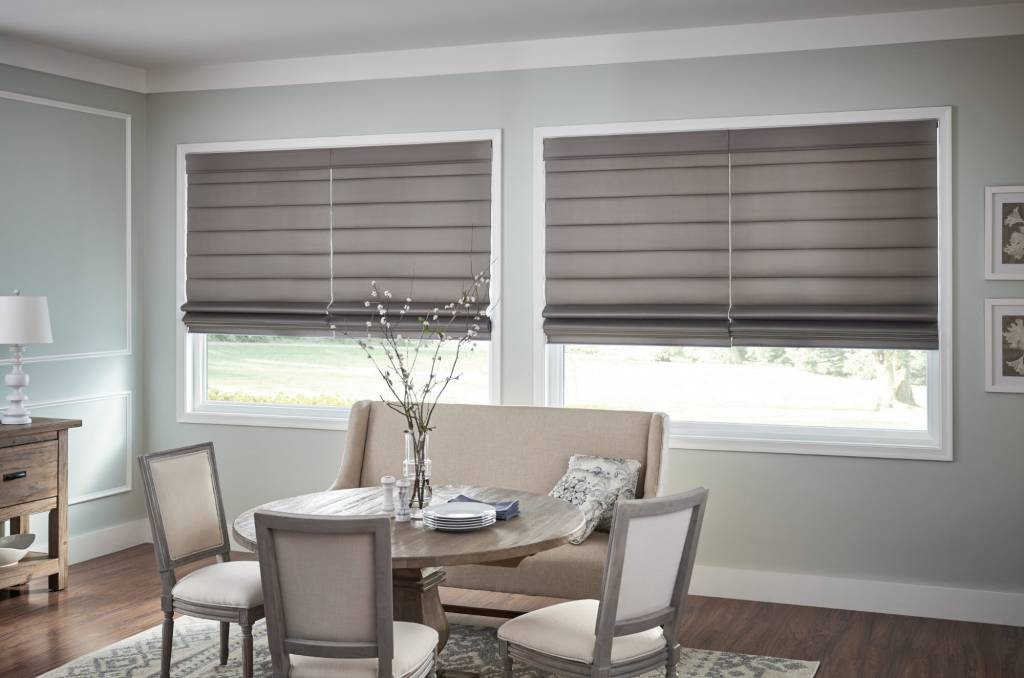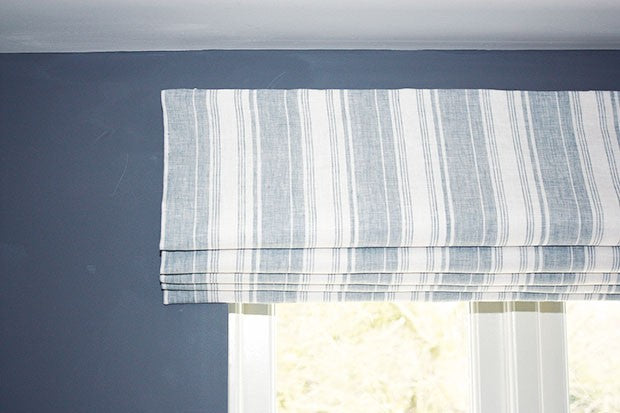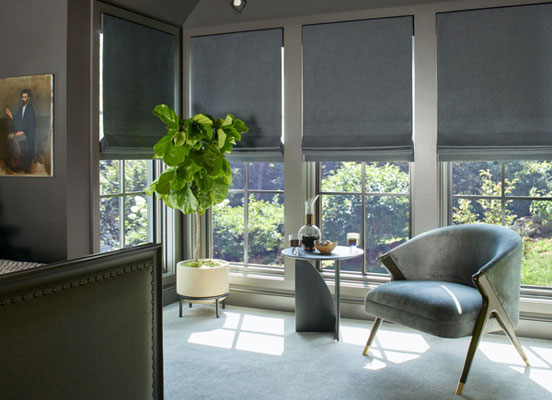
What is a Roman Shade?
A Roman shade is a classic window treatment that has been around for quite some time. The truth is that today's Roman shades are not the same and are light years ahead of the original window covering, thanks to advances in material, stitching processes, and design. The Roman shade is a soft window treatment that gently folds up as the drawstring is pulled. Roman shades are distinguished because they fold as they rise, adding an appealing softness to your decor. They may be fashioned from various materials and in a variety of styles.
You might be curious why these shades are known as Roman Shades. Roman Shades are said to have originated in Rome's legendary Coliseum. In this ancient and beautiful stadium, significant and often violent performances were held for the masses.
Archeological digs revealed a system of retractable fabric shades that could be drawn over the Coliseum, bathed in the intense Mediterranean sun. Fabric coverings were famous in Rome for being used in numerous public areas and homes to shelter and shield spectators from the scorching sun. Window treatments have existed for as long as people have needed privacy, light control, and security.
Types of Roman Shades
Soft Fold: Folds that are weak or hobbled Roman shades are a classic style with smooth fabric folds that drop from top to bottom, resembling a waterfall or a lovely ruffle. If you want your window coverings to be heavier and bulkier, this is the way to go.
Flat Fold: Fold in half horizontally Roman shades are created from a single large piece of fabric. There are no horizontal seams across the fabric's face, allowing you to see stripes and other striking patterns without interruption. The shades can take up less space when fully lifted because there are no seams.
Batten Front: Roman shades with a batten, also known as tunnels, are fabric tubes with a stiff strip of solid material sewed into the outer side of the shade at regular intervals. Because the battens don't interfere with the design, it's ideal for stripes and other patterns.
Batten Back: The battens on these Roman shades are reversed and sewed into the side facing the window (or door), giving them a delicate, polished appearance while down and the characters distinct folds when raised.
Read more: Do Roman Shades Block Light?
Modern Roman Shades
Let's look at a new choice known as the contemporary Roman shade. Modern Roman shades have a similar appearance to traditional Roman shades. Still, they are distinct in that they do not fold. All modern shades may be rolled up and stored in a canister. The benefit is that you don't have to stack your shades as you would with a typical Roman shade. Once the shade is inside the canister, you'll have roughly 3 1/2 inches of piling on a modern Roman shade. The longer the window, the longer the stacking on a conventional Roman shade. It may be anywhere between 6 and 16 inches long.
With a modern Roman shade, you may choose between top-down or bottom-up operation, which allows you to descend the shade from the top of the window downwards or raise it upwards like any other regular shade. You can accomplish this with a classic shade, but the stacking you get with a traditional shade makes it less straightforward and easier than the contemporary solution. When you raise the contemporary Roman shade all the way up into the canister, it completely covers it. Roman shades continue to establish window fashion trends. They may be used to complement the most elegant or plain of interiors.
Read more: How To Pick The Right Color For Your Curtain
Summary
Roman shades are just a sophisticated window covering. The fabric thickness of the contemporary Roman shade is another benefit. A classic Roman shade has liners and is relatively thick. The current Roman shade is incredibly thin and light, and it comes with a self-liner for privacy or light control. Roman shades continue to establish window fashion trends and may be used to complement the most elegant or plain of interiors. Roman shades are just a sophisticated window covering.


